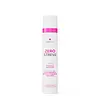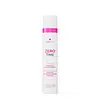What's inside
What's inside
 Key Ingredients
Key Ingredients

 Benefits
Benefits

 Concerns
Concerns

 Ingredients Side-by-side
Ingredients Side-by-side

Water
Skin ConditioningEthylhexyl Stearate
EmollientGlyceryl Stearate
EmollientCetyl Alcohol
EmollientCoco-Caprylate/Caprate
EmollientGlycerin
HumectantCetearyl Alcohol
EmollientHydroxyethyl Acrylate/Sodium Acryloyldimethyl Taurate Copolymer
Emulsion StabilisingInulin
Skin ConditioningHyaluronic Acid
HumectantTamarindus Indica Seed Extract
EmollientAlpha-Glucan Oligosaccharide
CleansingPhenoxyethanol
PreservativeStearic Acid
CleansingC10-18 Triglycerides
EmollientHydrolyzed Glycosaminoglycans
HumectantParfum
MaskingSodium Lauroyl Glutamate
Dicaprylyl Ether
EmollientEthylhexylglycerin
Skin ConditioningPentylene Glycol
Skin ConditioningWater, Ethylhexyl Stearate, Glyceryl Stearate, Cetyl Alcohol, Coco-Caprylate/Caprate, Glycerin, Cetearyl Alcohol, Hydroxyethyl Acrylate/Sodium Acryloyldimethyl Taurate Copolymer, Inulin, Hyaluronic Acid, Tamarindus Indica Seed Extract, Alpha-Glucan Oligosaccharide, Phenoxyethanol, Stearic Acid, C10-18 Triglycerides, Hydrolyzed Glycosaminoglycans, Parfum, Sodium Lauroyl Glutamate, Dicaprylyl Ether, Ethylhexylglycerin, Pentylene Glycol
Water
Skin ConditioningSqualane
EmollientDiheptyl Succinate
EmollientCaprylic/Capric Triglyceride
MaskingIsostearyl Isostearate
EmollientCetearyl Alcohol
EmollientGlycol Palmitate
EmulsifyingArachidyl Glucoside
EmulsifyingArachidyl Alcohol
EmollientCapryloyl Glycerin/Sebacic Acid Copolymer
Skin ConditioningButyrospermum Parkii Butter
Skin ConditioningTocopheryl Acetate
AntioxidantMannan
Kappaphycus Alvarezii Extract
Skin ConditioningCaesalpinia Spinosa Fruit Extract
Skin ProtectingCetearyl Glucoside
EmulsifyingPhenoxyethanol
PreservativeParfum
MaskingBehenyl Alcohol
EmollientPentylene Glycol
Skin ConditioningEthylhexylglycerin
Skin ConditioningCitric Acid
BufferingSodium Hydroxide
BufferingWater, Squalane, Diheptyl Succinate, Caprylic/Capric Triglyceride, Isostearyl Isostearate, Cetearyl Alcohol, Glycol Palmitate, Arachidyl Glucoside, Arachidyl Alcohol, Capryloyl Glycerin/Sebacic Acid Copolymer, Butyrospermum Parkii Butter, Tocopheryl Acetate, Mannan, Kappaphycus Alvarezii Extract, Caesalpinia Spinosa Fruit Extract, Cetearyl Glucoside, Phenoxyethanol, Parfum, Behenyl Alcohol, Pentylene Glycol, Ethylhexylglycerin, Citric Acid, Sodium Hydroxide
Ingredients Explained
These ingredients are found in both products.
Ingredients higher up in an ingredient list are typically present in a larger amount.
Cetearyl alcohol is a mixture of two fatty alcohols: cetyl alcohol and stearyl alcohol. It is mainly used as an emulsifier. Emulsifiers help prevent the separation of oils and products. Due to its composition, it can also be used to thicken a product or help create foam.
Cetearyl alcohol is an emollient. Emollients help soothe and hydrate the skin by trapping moisture.
Studies show Cetearyl alcohol is non-toxic and non-irritating. The FDA allows products labeled "alcohol-free" to have fatty alcohols.
This ingredient is usually derived from plant oils such as palm, vegetable, or coconut oils. There is debate on whether this ingredient will cause acne.
Due to the fatty acid base, this ingredient may not be Malassezia folliculitis safe.
Learn more about Cetearyl AlcoholEthylhexylglycerin (we can't pronounce this either) is commonly used as a preservative and skin softener. It is derived from glyceryl.
You might see Ethylhexylglycerin often paired with other preservatives such as phenoxyethanol. Ethylhexylglycerin has been found to increase the effectiveness of these other preservatives.
Parfum is a catch-all term for an ingredient or more that is used to give a scent to products.
Also called "fragrance", this ingredient can be a blend of hundreds of chemicals or plant oils. This means every product with "fragrance" or "parfum" in the ingredients list is a different mixture.
For instance, Habanolide is a proprietary trade name for a specific aroma chemical. When used as a fragrance ingredient in cosmetics, most aroma chemicals fall under the broad labeling category of “FRAGRANCE” or “PARFUM” according to EU and US regulations.
The term 'parfum' or 'fragrance' is not regulated in many countries. In many cases, it is up to the brand to define this term.
For instance, many brands choose to label themselves as "fragrance-free" because they are not using synthetic fragrances. However, their products may still contain ingredients such as essential oils that are considered a fragrance by INCI standards.
One example is Calendula flower extract. Calendula is an essential oil that still imparts a scent or 'fragrance'.
Depending on the blend, the ingredients in the mixture can cause allergies and sensitivities on the skin. Some ingredients that are known EU allergens include linalool and citronellol.
Parfum can also be used to mask or cover an unpleasant scent.
The bottom line is: not all fragrances/parfum/ingredients are created equally. If you are worried about fragrances, we recommend taking a closer look at an ingredient. And of course, we always recommend speaking with a professional.
Learn more about ParfumPentylene glycol is typically used within a product to thicken it. It also adds a smooth, soft, and moisturizing feel to the product. It is naturally found in plants such as sugar beets.
The hydrophilic trait of Pentylene Glycol makes it a humectant. As a humectant, Pentylene Glycol helps draw moisture from the air to your skin. This can help keep your skin hydrated.
This property also makes Pentylene Glycol a great texture enhancer. It can also help thicken or stabilize a product.
Pentylene Glycol also acts as a mild preservative and helps to keep a product microbe-free.
Some people may experience mild eye and skin irritation from Pentylene Glycol. We always recommend speaking with a professional about using this ingredient in your routine.
Pentylene Glycol has a low molecular weight and is part of the 1,2-glycol family.
Learn more about Pentylene GlycolPhenoxyethanol is a preservative that has germicide, antimicrobial, and aromatic properties. Studies show that phenoxyethanol can prevent microbial growth. By itself, it has a scent that is similar to that of a rose.
It's often used in formulations along with Caprylyl Glycol to preserve the shelf life of products.
Water. It's the most common cosmetic ingredient of all. You'll usually see it at the top of ingredient lists, meaning that it makes up the largest part of the product.
So why is it so popular? Water most often acts as a solvent - this means that it helps dissolve other ingredients into the formulation.
You'll also recognize water as that liquid we all need to stay alive. If you see this, drink a glass of water. Stay hydrated!
Learn more about Water